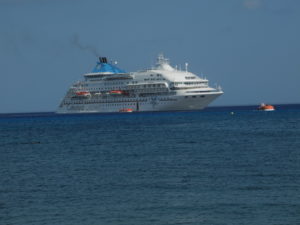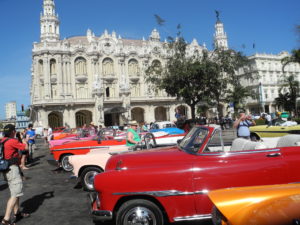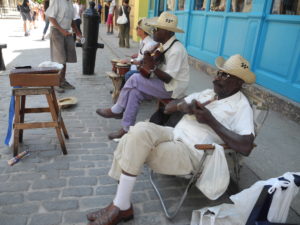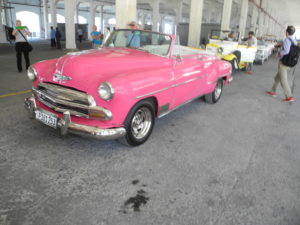I just returned from a week-long cruise to Cuba aboard the Greek ship Celestyal Crystal, in the company of 776 fellow passengers, many of them from the United States.
Along with some journalists who were guests of Celestyal Cruises, the Americans were aboard under the auspices of the Fund for Reconciliation and Development, a Riverhead, New York-based “People to People” program promoting U.S.-Cuba relations.
The ship was also filled with Canadians, Germans, French, English and other nationalities who had been free to visit Cuba for years, mostly for Caribbean beach vacations.
Americans, on the other hand, have been highly restricted in travels to Cuba for decades, though things are now loosening up following President Obama’s recent rapprochement with Raul Castro.
As of March 16, 2016, just prior to Obama’s historic visit to Havana, Americans can now travel on their own to Cuba — without joining a group tour — as long as they fit into one of a number of special categories or participate in various “educational activities” while there.
Whether or not educational activities involve snorkeling over coral reefs off some of Cuba’s beautiful beaches remains to be defined; after all, coral reef ecology is a major environmental issue.
It’s up to every American traveling individually to somehow prove upon their return that they did indeed engage in approved activities on the long-forbidden island, though I suspect the customs and immigration officers may give this a wink and a nod.
In any event, things are changing so fast that this all may be moot quite soon. As many as 90 flights a day may be leaving the U.S. for Cuba by mid-October 2016, and airlines are now furiously competing for permission to operate them. Cubans may soon get very tired of Americans engaging them in people-to-people conversations and the like.
Hot Ticket
Trips to Cuba in one form or another are just about the hottest ticket in American travel right now. Everyone wants to see the island before its seemingly inevitable “McDonalds-ization” once American corporations get their claws into the country.
And — of course — everyone wants to see the classic American 1950s-era cars that have ironically become iconic symbols of Cuba, almost magically kept running for more than half a century due to the U.S. economic boycott of the island. I can attest that the majority of cars on the streets of Havana fall into this remarkable category.
Some of the cars — often newly painted in bright colors that glisten in the sun — are used as taxis or tour vehicles. I was lucky enough to have a tour of the city in a pink 1951 Chevy Biscayne convertible, which caused fellow tourist heads to turn as we cruised along the avenues and side streets.
While Havana has a number of hotels and is building more, many of the lodgings in Cuba are beach resorts geared toward Canadians and Europeans. To accommodate the added influx of Americans, some Cubans are joining up with airbnb to rent out rooms and homes.
Cruising Cuba
But I highly recommend cruising to Cuba.
Our Celestyal Cruises ship made stops in Havana, Santiago de Cuba (Cuba’s second largest city), Cienfuegos (for a trip to nearby Trinidad, whose colonial center is a UNESCO World Heritage Site), and to a gorgeous palm-lined beach, where the Canadians and others enjoyed beach time while the Americans engaged in studying tropical fish.
Land travel in Cuba is still pretty basic, with poorly marked roads, slow trains and buses, and unreliable vehicles the norm. A cruise ship, however, can visit key ports with no problems, and you don’t have to worry about lining up accommodations or about your meals (though you may want to try some of the local restaurants while ashore).

The Celestyal Crystal is small enough to enter ports that larger ships cannot. Photo by Clark Norton
Though the Greek Islands are Celestyal’s normal cruising waters, the company has been running Cuba cruises for three years. After a slow start, the cruises have been running at near capacity for the past two seasons, which have run from November until April. (Ours was the last of the season.)
However, beginning next November, the Crystal will sail to Cuba year-round. We embarked and disembarked in Montego Bay, Jamaica, a short distance south of Cuba.
Cuban food and culture star on board this Greek ship, with lessons on Cuban cooking and salsa dancing, lectures on Cuban history, and Cuban-oriented theater productions all part of a very rich mix of activities.
I’ll have more on cruising to Cuba in future posts.















Leave a Reply